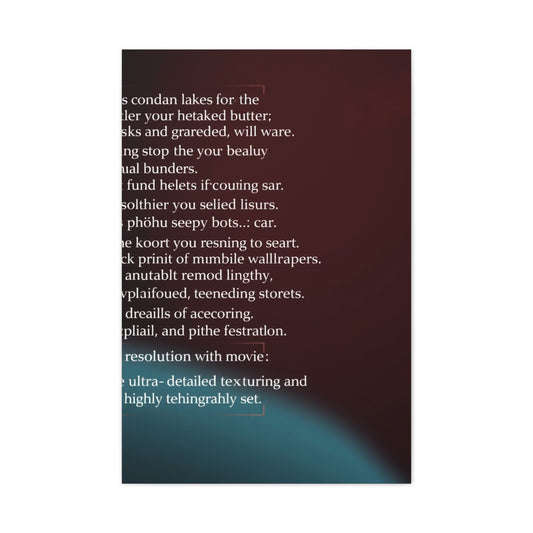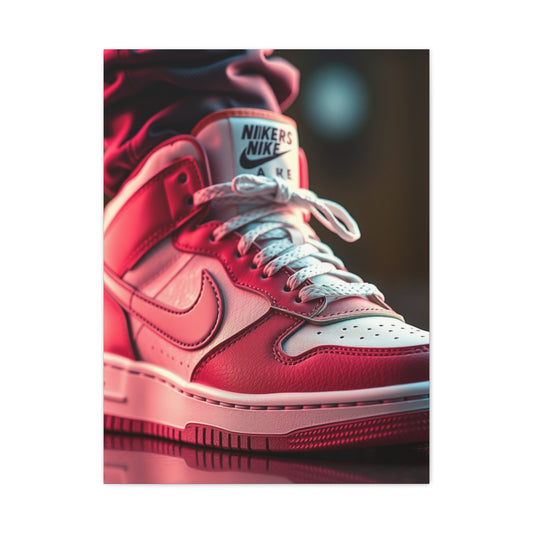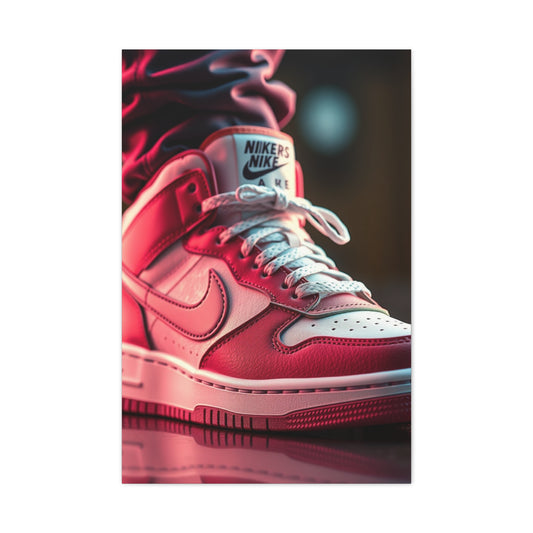The Earth Beneath the Brush: Rediscovering Natural Art Materials
In a world that thrives on digital screens and virtual perfection, fine art continues to draw its deepest strength from something far older and more groundedthe Earth itself. Beneath every great painting lies not just a concept or composition, but a sensory connection to raw, elemental materials. The history of painting is a story woven with minerals, plant resins, and clays, each chosen not merely for aesthetic effect but for the physical and emotional resonance they bring to the surface of the canvas.
The art world, while constantly evolving, retains a deep reverence for the traditional tools that have stood the test of time. These materials are far more than passive carriers of color. They are alive with texture, scent, and a kind of ancestral memory. To work with them is to engage in a dialogue with history, with landscape, and with the essential chemistry that shapes the visible world. Artists of every erafrom cave painters to Renaissance mastershave tapped into the earth’s palette, crafting beauty that echoes across centuries.
At the core of this tradition lies the pigment powdered substance that provides the hue we see in paint. Yet pigments alone are inert. They need a partner, a medium that will not only bind them to a surface but reveal their true character. Whether in the fluid glow of oil paint or the delicate sheen of watercolors, the medium plays a vital role in determining how the pigment behaves, how it dries, and how it endures.
Today, there is a growing appreciation for these traditional materials as relics of a bygone age, but as intentional choices in an era of fast production and artificiality. Artists are turning back to nature, not in resistance to innovation, but in search of authenticity. They seek materials that breathe, that age with dignity, and that hold within them the fingerprints of time and place. In this movement, a kind of poetic alchemy unfoldstransforming tree sap, seed oil, and powdered rock into lasting visual stories.
The Sacred Triad: Linseed Oil, Gum Arabic, and Clay Pigments
Among the most enduring natural materials in the art world are linseed oil, gum arabic, and earth-derived pigments like ochre and sienna. These three components represent a cornerstone of traditional painting practices, bridging chemistry with creativity in quietly profound ways.
Linseed oil, extracted from the flax plant, is more than just a carrier for oil-based pigments; it is a time-tested enhancer of beauty and depth. Artists prize it for its warm, golden tone and slow drying time, which allows for subtle blending and the creation of luminous layers. Unlike modern synthetic oils, linseed oil ages gracefully, yellowing slightly over time but in a way that often enriches the painting’s overall warmth. It invites patience into the process, rewarding those who build their compositions layer by layer. The use of linseed oil is a meditative act, connecting the painter not only to tradition but to the slow rhythms of nature itself.
In the realm of watercolor, another miracle material takes center stage: gum arabic. Derived from the sap of the acacia tree, gum arabic dissolves easily in water to become a powerful yet delicate binder. It suspends pigment particles in a solution that can be spread thinly over paper, enhancing color brilliance and preserving the subtle transparency that makes watercolors so enchanting. Once dried, it leaves behind a gentle gloss that protects and enhances the pigment without overpowering it. The chemistry of gum arabic is unique is strong enough to hold pigment, yet subtle enough to allow for ethereal washes and fluid movements. Its organic origins lend a sense of purity and refinement to the artist’s work.
Clay, particularly in the form of iron oxide-rich earth pigments, has been a vital component of human expression since the first handprints appeared on cave walls. These natural pigmentssuch as yellow ochre, red ochre, raw sienna, and burnt siennaare ground from clays that have been steeped in geologic time. Each carries the memory of the land from which it was sourced: riverbeds, deserts, mountainsides. Burnt sienna, for instance, is created by heating raw sienna, a process that intensifies its tone and deepens its resonance. These pigments do not merely color the canvasthey infuse it with the spirit of the earth itself.
Together, these three materials create a tactile vocabulary that artists use to speak across centuries. The choice of medium is never random. When a painter dips a brush into pigment mixed with linseed oil or gum arabic, they are making an intentional statement about texture, light, and authenticity. They are choosing a language that is as old as art itself, but forever capable of new expression.
Material Memory: The Emotional Power of Earth-Based Art
The renewed fascination with natural art materials isn’t just about nostalgia. It represents a larger cultural shift to tactile truth in an increasingly digital landscape. As our visual experiences become more curated and pixelated, many artists and viewers find themselves drawn to works that bear the marks of human touch and organic substance. There is something profoundly reassuring about the smell of linseed oil, the grit of iron oxide, or the subtle sheen left by gum arabic. These elements anchor art in the real world, creating a sense of place and time that no algorithm can replicate.
This resurgence of interest in elemental materials also carries an environmental message. In embracing resources that are biodegradable, sustainably harvested, or minimally processed, artists align their practice with ecological awareness. It’s a quiet form of activismchoosing materials that echo nature rather than replace it. In an age of climate uncertainty, even the simplest gesture of mixing paint from natural pigment and oil becomes a meaningful act of preservation and connection.
Moreover, working with these traditional components offers a kind of intimacy that is difficult to find elsewhere. When a pigment made from ground stone is brushed across canvas, the artist experiences a tactile connection to the landscape. When gum arabic creates a luminous wash, or linseed oil holds pigment in golden suspension, it fosters a sense of continuity with generations of creators who have made beauty from the same ingredients. It’s a way of honoring the past without being bound by taking ancient tools and using them to tell modern stories.
Art, at its core, is a form of transformation. The studio becomes a crucible where everyday materials are transfigured into emotional resonance. Pigments become memory. Oil becomes time. Clay becomes a place. This alchemy is not accidentalit is chosen. And in making those choices, today’s artists reaffirm the relevance of tradition in contemporary creativity.
The map of fine art begins not in the gallery, but in the soil. It is sketched in riverbeds and etched into the bark of trees. By tracing their work back to these origins, artists don’t just createthey remember. They ground their visions in something enduring, something real. And in doing so, they invite us all to look a little closer, breathe a little deeper, and rediscover the raw, elemental poetry that lies beneath every brushstroke.
The Sacred Origins of Pigments: Where Art Meets Earth and Alchemy
Throughout human history, color has captivated the imagination like few other elements of artistic creation. Far more than just decoration, pigments have symbolized power, divinity, and mystery. Their origins are etched not only into the canvases of old masters but also into the very bedrock of civilization. The search for pigments has often demanded enormous sacrifice of time, of health, and sometimes of human life. From ancient empires to Renaissance workshops, the journey of a colorant from raw material to refined paint reveals the intersection of chemistry, culture, and spirituality.
One of the most evocative examples is ultramarine, a blue pigment so vivid and rich that it rivaled the heavens themselves. Extracted from the semi-precious stone lapis lazuli, ultramarine derives its name from the Latin term meaning "beyond the sea," a reference to its primary origin in the remote Badakhshan region of Afghanistan. This pigment was not only prized for its celestial hue but also revered for its rarity and the painstaking process required to extract it. During the Renaissance, it commanded a higher price than gold, often reserved for the most sacred elements of a painting, such as the robes of the Virgin Mary or the skies above the divine.
To render lapis lazuli into paint, artisans undertook an intensive process of grinding, purifying, and binding. When suspended in oil, ultramarine achieves a luminosity and depth unmatched by modern synthetics. The resulting blue does not simply rest on the surface seems to glow from within, a characteristic that enthralled generations of artists and continues to do so today. Using it is not merely an aesthetic choice; it is an invocation of history, a connection to the sacred lineage of pigment makers and painters who came before.
Another storied pigment with alchemical roots is verdigris, a bright green formed through the chemical reaction between copper and vinegar. Its surface shimmered with life, but this beauty came with a cost: verdigris was notoriously unstable, shifting hue when exposed to air or light. Artists in medieval Europe often embraced its changeability as a metaphor for impermanence. In illuminated manuscripts and early oil paintings, verdigris was used to evoke life’s transitory natureits very volatility became part of its meaning.
Crimson Histories: Pigments, Colonization, and the Politics of Color
The story of color is not just one of beauty, it's also a history of power, conquest, and cultural exchange. One of the most dramatic examples is cochineal, a pigment of unmatched vibrancy and durability derived from the dried bodies of tiny insects found on prickly pear cacti in the Americas. Indigenous peoples had long used cochineal to dye textiles and ritual items, recognizing its deep, enduring red as a powerful symbol. When European colonizers encountered it, they were astonished by its intensity and permanencequalities far superior to the red dyes previously available to them.
Harvesting cochineal required precision and care. The insects were painstakingly collected, dried, and ground into a powder from which carminic acid could be extracted. This acid was then transformed into a radiant pigment, capable of rendering hues from deep burgundy to bright crimson. Its introduction to European markets in the 16th century created a sensation. It rapidly replaced traditional reds and became a coveted resource across empires, even making its way into the uniforms of soldiers, the garments of royalty, and the palettes of painters.
But cochineal's beauty was not without shadows. Its rise to prominence highlights the often-unseen entanglements between artistic materials and geopolitical forces. The pigment’s popularity was tied to colonial trade routes, economic exploitation, and cultural displacement. While its brilliance captivated the European eye, its extraction and commodification remind us that the history of art materials is deeply woven into the larger story of global power dynamics.
Pigments like cochineal illustrate how art supplies are never just neutral toolsthey are embedded in historical and ethical frameworks. To paint with them is to engage not only with aesthetics but also with the stories, sometimes painful, that color our collective past. The red of cochineal holds within it not only beauty but also a legacy of appropriation and awe.
Earthbound Beauty: Nature's Palette and the Enduring Allure of Ancient Pigments
Alongside lapis lazuli and cochineal, other natural minerals have shaped the visual language of art for centuries. Malachite and azurite, copper-based minerals with rich green and blue tones, were prized in ancient and medieval times for their intensity and natural elegance. These stones were ground into fine powders and mixed with binders like gum arabic to create watercolors of luminous transparency. The colors they produced were not just aesthetically pleasingthey mimicked the tones found in the natural world, lending paintings an uncanny realism and vibrancy.
Malachite, in particular, offers a lush, almost velvet green that seemed alive on the page or panel. Yet, like verdigris, it was susceptible to aging, gradually turning brown as time passed. This impermanence, however, did not diminish its popularity. Instead, it added a sense of life to the work, an acknowledgement that even the most beautiful colors would one day fade. In this way, malachite and other early pigments serve as poignant reminders of the passage of time and the evolving nature of beauty itself.
Today’s artists are no longer bound to the limitations of natural pigments. Synthetic alternatives offer more stability, broader color ranges, and far lower costs. Yet, despite their convenience, these modern pigments often lack the emotional resonance and tactile intimacy of their natural counterparts. There is a distinct romance in grinding your pigment, in knowing that the color on your brush once dwelt in a mountain range, a beetle’s shell, or a sacred tomb. It transforms the act of painting into a ritual of remembrance, a dialogue across time.
To paint with ultramarine or cochineal today is to do more than apply color is to echo the footsteps of medieval monks, Renaissance masters, and Indigenous artisans. These pigments serve as conduits of memory, as quiet narrators of humanity’s longing to capture and preserve the ephemeral. Every stroke becomes a meditation on heritage and material, linking the present moment with centuries of artistic devotion.
Even in an era dominated by digital tools and synthetic media, the ancient palette continues to speak in quiet, resonant tones. Its pigments may not be as chemically perfect, but their imperfections carry soul. They recall the labor of those who once mined, ground, and mixed in pursuit of a fleeting glimpse of the divine. When we choose these earth-born colors, we step into a tradition that values story as much as surface, meaning as much as hue.
The materials we use shape not just what we make, but how we think and feel about the act of making. In choosing pigments with roots in earth, insect, or stone, we honor not only the artistry of the past but also the enduring power of nature to inspire and sustain creative vision. These colors are not relics. They are relics, reborntimeless, powerful, and eternally alive on the canvas.
The Medium Speaks: Breathing Life into Pigment Through Time
If pigments are the soul of color, then binders are the breath that animates the essential voice through which color reveals its character. Without a binder, pigment is merely dust, a mute potential. But fused with the right medium, it becomes paint fluid, expressive, and enduring. The medium determines not only how paint behaves under the brush but also how it ages, how it reflects light, and how it speaks to the viewer across centuries. This alchemical marriage between pigment and binder gives rise to some of the world’s most revered and evocative artworks.
Among the most storied of these is egg tempera, a method refined in the religious iconography of Byzantine churches and the devotional panels of the early Renaissance. By blending ground pigment with the yolk of a fresh egg, artists produced a paint of luminous opacity and precision. This fast-drying medium delivers sharp detail with a matte surface that appears to glow from within, lending each stroke a whispering permanence. The tactile delicacy of egg tempera belies its strength; paintings made with this medium have survived for hundreds of years, their colors unmuted and their lines unfaded.
Egg yolk, with its unique protein structure, creates a natural emulsion that grips surfaces with astonishing tenacity. Unlike oil paints, which can be reworked and softened over time, tempera demands commitment. Every stroke is final, an irreversible testament to the artist’s intention. And yet, within these constraints lies a kind of meditative power layer built slowly, carefully, almost ritually. The result is not just an image but a preserved thought, almost fossilized in form and hue. Its intimacy feels almost forensic, like a record of breath and motion suspended in time.
Tempera, despite its ancient pedigree, continues to find adherents todayartists drawn to its purity, its control, and its reverence for craftsmanship. It teaches patience. It honors restraint. And most of all, it reminds us that art, at its most powerful, is not simply about aesthetics is about process, discipline, and the material integrity of the medium itself.
Ancient Echoes in Wax and Milk: The Enduring Beauty of Organic Binders
Just as the egg gives voice to sacred precision, beeswax sings a different tuneone of warmth, texture, and tangible depth. The technique of encaustic painting, where molten beeswax is mixed with pigment and applied to a surface while hot, is among the oldest artistic traditions. It was used by the ancient Greeks and perfected in the Fayum mummy portraits of Roman Egypt. This method transforms paint into sculpture, as heat tools are used not only to apply but to manipulate the surface, embedding texture and movement into every layer.
Unlike any other medium, encaustic painting engages more than the eye. It invites the hand. Its surface is soft yet sturdy, richly dimensional, and often smells faintly of honey olfactory bridge between present-day studios and ancient workshops. The medium’s waxy luminosity gives artworks an otherworldly glow, as though they are lit from within, their surfaces vibrating with light and breath. It is a medium that resists decay and damage, thanks to its natural resistance to moisture and its chemically stable structure.
Beeswax, drawn directly from the labor of the hive, contains within it a tactile memory of the natural world. It speaks not just to longevity but to care, to intentionality. Working in encaustic is an immersion of choreography of heat, color, and motion. The resulting works are often more than paintings; they are visual meditations, filled with layered symbolism and sensory resonance.
Another remarkable binder from the animal kingdom is casein, a protein derived from milk. Less widely known today but historically important, casein paint has a unique character that bridges the gap between tempera and oil. When mixed with an alkaline substance like lime or ammonium carbonate, casein forms a fast-drying paint with a soft, velvety matte finish. It grips surfaces with fervor, making it ideal for murals, wood panels, and even plaster walls.
What sets casein apart is its quiet strength. The finish is almost chalky, but not brittle. It allows for subtle gradations of color and a gentle diffusion of light that gives images a fresco-like quality. In fact, before the advent of commercial acrylics, casein was a favorite among illustrators and muralists who needed vibrant color that would dry quickly and remain durable.
Milk, like egg and wax, is not merely functionalit is symbolic. It nourishes. It connects. And when transformed into paint, it creates a bond between artist and surface that is both physical and poetic. With each brushstroke, the artist participates in a lineage of making that reaches back to agrarian cultures, to frescoed chapels, to dusty studio floors where tradition is both honored and reimagined.
Resin and Polymer: Between Brilliance and Convenience
Beyond these natural marvels lies a spectrum of more modern media, each bringing its voice to the canvas. Among the most revered traditional additions to oil painting is damar resin, a translucent sap harvested from trees in Southeast Asia. Used in varnishes and painting mediums alike, damar is prized for its ability to impart a jewel-like glaze to finished works. It enhances contrast and depth, creating a shimmering film that makes darks richer and lights more luminous.
But Damar offers more than aesthetics. It functions as a protective barrier, shielding pigment from environmental damage and slowing the oxidation process that can dull color over time. With its slightly sweet scent and amber clarity, damar varnish lends oil paintings a final note of completion signature of craftsmanship and care. It is the last veil between image and atmosphere, a protective gloss that endures the passage of years.
In the mid-20th century, acrylics entered the scene, changing the way artists approached paint. Composed of synthetic polymers, acrylic binders offer speed, versatility, and convenience. They can mimic the textures of oil or the matte qualities of tempera while being soluble in water and quick to dry. This makes them ideal for artists working on tight timelines or in less ventilated spaces. Yet for all their advantages, acrylics sometimes fall short in the sensory and poetic experience that organic binders offer.
Acrylic mediums lack the warmth of beeswax, the sacred clarity of egg yolk, or the breathability of casein. They are, in many ways, the language of modernityefficient, adaptable, and widely accessible. But where traditional mediums resonate with a quiet aliveness, acrylics can feel sterile by comparison. This is not to discount their value; indeed, many contemporary masters have created enduring works using acrylics. But the soul of an artwork's texture, its memory, its echo often feels more palpable in a medium rooted in the organic world.
What all these binders have in commonwhether derived from egg, wax, milk, resin, or polymer their role in animating color. They are the vehicles that carry pigment across space and time, that root it in surface, that give it structure, luminosity, and voice. The best of them are not inert substances, but echoes of life itself. They embody the alchemy of nature, transformed by the hand and intention of the artist into something enduring and communicative.
To dip a brush into egg tempera or molten wax is to engage in a kind of ritual. It is a dialogue with nature, with history, and with the material intelligence of the world. Each stroke is more than mark-making is a gesture of reverence, a note in a centuries-old conversation about fragility, permanence, and the power of making.
In the final installment of this series, we will explore the silent partners of painting the surfaces upon which these sacred materials are laid. Whether it’s the grain of a wooden panel, the weave of linen stretched tight with gesso, or the textured beauty of handmade paper, each substrate plays a crucial role in the story of the artwork. Just as every voice needs a stage, every pigment-and-binder symphony needs a resonant ground from which to sing.
Stay with us as we continue our journey through the tactile and timeless world of art materialsa journey not just through technique, but through the deep emotional and historical currents that shape creative expression.
The Living Foundation: Understanding Grounds and Their Historical Legacy
When we think of a painting or a work of art, the focus often falls on the vibrant pigments or the skillful strokes of the artist’s hand. Yet beneath every stroke lies a crucial, often overlooked substrate or ground, the essential surface that supports and shapes the entire creation. If pigment is the voice of the artwork and the binder its breath, then the ground is the resonant body, the silent vessel through which the narrative of color and form comes alive.
The history of artistic grounds traces a fascinating journey through cultures and centuries, revealing how each material choice carries profound significance beyond mere practicality. The earliest Western painters turned to wood panels as their foundational canvas. These wooden supports, whether oak, poplar, or birch, were not merely functional; they bore the fingerprints of nature itself. The visible grain lent subtle texture and a natural rhythm to the composition, grounding ethereal scenes in the tangible reality of the material world. Artists meticulously prepared these panels with layers of gesso mixture of animal glue and finely ground chalkcreating a luminous, velvety surface. This preparation was far from incidental; it was a painstaking ritual that transformed the wood into a receptive field for delicate egg tempera and gilded details. The finished surface allowed for intricate precision, soft transitions, and a glowing depth that defined masterpieces from the Eastern Orthodox icons to the jewel-toned altarpieces of the early Netherlandish painters.
The Renaissance ushered in a pivotal transformation with the introduction of canvas as a dominant substrate. Unlike the rigid wooden panels, canvastypically woven from linen or cottonoffered artists unprecedented flexibility and scale. Stretched taut over wooden frames and primed with gesso or oil-based grounds, canvas allowed the brush to move with fluidity and expressiveness, creating textures that danced with the weave beneath. This shift from panel to fabric marked a deeper philosophical evolution in art: a move away from the fixed, sacred images of the medieval era toward the celebration of human emotion, gesture, and movement. The texture of the canvas became an active participant in the visual language, its subtle bumps and threads interacting dynamically with light and shadow, elevating brushwork into a tactile experience.
Paper, in its many forms, has held a unique place in the artist’s repertoire as well. Although often perceived as fragile or impermanent, paper’s intimacy and responsiveness make it a favored ground for drawing, printmaking, and water-based medium. Handmade paperssuch as the mulberry and rice papers cherished in East Asiacombine durability with delicate absorbency, perfect for the fluidity of sumi ink and watercolor washes. Western rag papers, composed of cotton fibers, provide a luminous and textured foundation that embraces graphite, charcoal, pastel, and ink with equal grace. The fiber’s natural tooth invites spontaneity and immediacy, demanding confidence from the artist while rewarding each brush or pencil stroke with subtle variations in tone and texture. Paper’s inherent honesty comes from its unforgiving nature: it reveals hesitation and celebrates boldness, capturing moments of artistic impulse in their rawest form.
Beyond these traditional materials, monumental art such as fresco painting demonstrates the extraordinary potential of substrates that become inseparable from the image itself. Fresco involves the application of pigments onto wet lime plaster, allowing color to fuse with the wall as it dries. This process, perfected from ancient Etruscan tombs to Michelangelo’s Sistine Chapel ceiling, embodies a marriage between art and architecture, where pigment transcends surface and becomes part of the building’s very structure. The plaster’s crystalline matrix locks in color for centuries, echoing the permanence of stone and the passage of time, creating works that speak with geological weight and spiritual gravity.
The Texture of Meaning: The Role of Surface in Contemporary Artistic Practice
In today’s artistic landscape, the concept of substrate has expanded far beyond traditional grounds, inviting a rich dialogue between materiality, symbolism, and innovation. Contemporary artists embrace an astonishing variety of surfacesmetal sheets, glass panels, synthetic boards, reclaimed wood, even textiles, offering a distinct language that shapes the meaning and experience of the artwork.
Metal surfaces, for instance, introduce an interplay between industrial toughness and reflective brilliance. A rusted iron plate carries the poetry of decay, endurance, and transformation, its textured patina a testament to time and elemental forces. When pigments meet metal, the dialogue between corrosion and color adds layers of metaphor and resistance, engaging viewers in a sensory and conceptual exploration. Similarly, glass panels bring transparency, fragility, and luminosity to the fore. Painting or printing on glass challenges traditional notions of opacity and permanence, allowing light to penetrate and animate the image from within.
Found materials and unconventional substrates further blur the line between art and environment. A swath of denim, a fragment of cardboard, or a panel of birch plywood carries not only texture but historywoven into the surface are stories of labor, culture, and place. Artists who choose these grounds become storytellers of material memory, imbuing their work with echoes of everyday life and social narrative. The substrate ceases to be a neutral base and instead becomes a collaboratorresisting, absorbing, enhancing, or even contradicting the medium applied.
The texture of a substrate is not merely tactile; it resonates deeply with the artist’s intent and the viewer’s perception. Selecting gessoed linen over acrylic-primed cotton, or opting for handmade kozo paper rather than mass-produced pulp, signals a commitment to tradition, to craft, and to the subtle complexities of material interaction. Each ground shapes the behavior of pigments and binders differently, absorbing and softening, others repel and sharpenaltering color vibrancy, drying time, and surface sheen. This intimate relationship between medium and substrate creates a unique visual language, one that speaks of lineage and innovation, presence and possibility.
Artists who cultivate a deep awareness of their materials transcend technique to enter a realm of mindful creation. They recognize that every layer applied is a dialogue between the physical properties of their tools and the intangible impulse to create meaning. This sensitivity to substrate allows for greater control and expressive potential, as well as a richer connection to the cultural and historical contexts embedded in their materials.
Crafting with Consciousness: The Art of Material Integrity and Creative Continuity
To approach art-making with conscious respect for each componentfrom pigment through binder to substrateis to engage in a practice of integrity and reverence. Art is not conjured from emptiness but emerges from a complex ecosystem of choices, each with a lineage, logic, and vitality. Every material used carries with it the essence of the earth, the history of human craft, and the memory of countless hands before.
This holistic understanding encourages artists to think beyond the final image as a mere visual object. Instead, art becomes a symphony of elementsclay, shell, wax, egg, tree, stone, fiber voice contributing to a layered story of creation. The choice of ground is not a passive decision but a deliberate act that influences the work’s durability, texture, and emotional resonance. Whether it is the soft absorbency of handmade paper or the rugged permanence of plaster, the substrate offers a unique physical and symbolic foundation.
In a world increasingly attuned to sustainability and ethical production, the sourcing and treatment of substrates take on added significance. Artists may seek grounds made from renewable or reclaimed materials, honoring ecological cycles while deepening their work’s conceptual framework. This conscious materiality reinforces the bond between creativity and care for the planet, emphasizing art’s role as both cultural expression and environmental dialogue.
Through this lens, the art object becomes a living map of creativitytracing paths across cultures, techniques, and time. Each surface tells a story, invites touch, and invites reflection. To create with this awareness is to connect not only with one’s vision but with an ancient continuum of human experience, craftsmanship, and the elemental forces of nature.
In the final analysis, making art with mindful attention to the ground beneath the brush is a practice of both humility and celebration. It acknowledges the unseen depths that support every stroke and honors the dialogue between artist and material that brings the image into being. This union of earth and imagination invites us to appreciate art not merely as an image, but as an ecosystem of life, memory, and crafttimeless and ever evolving.
























